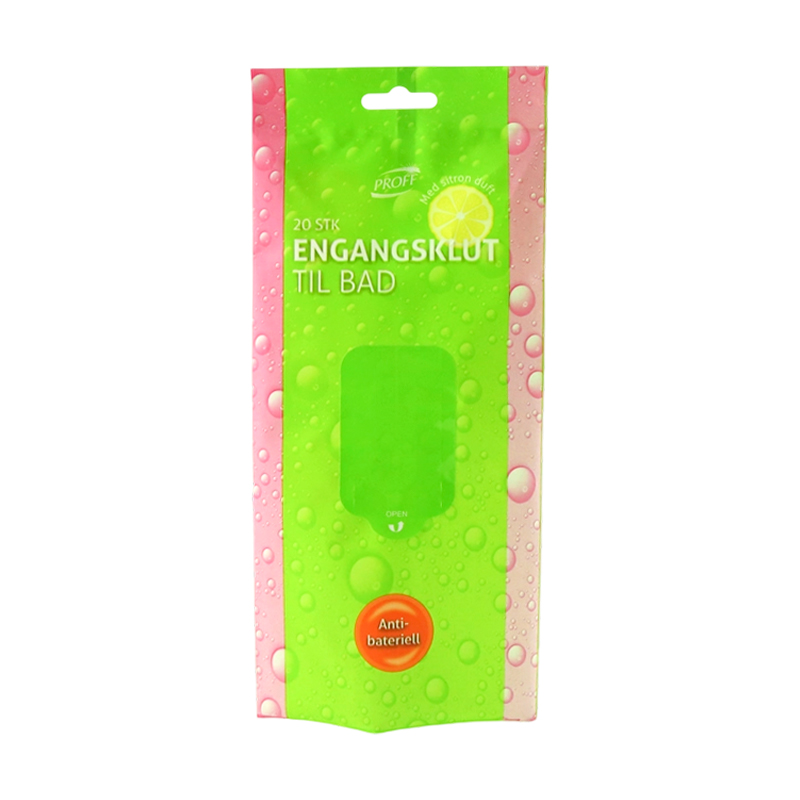2025-07-24
As hygiene and convenience continue to drive consumer preferences worldwide, packaging innovation is keeping pace with the demands of a growing wet wipes market. A new packaging solution—the Leak-Proof Wet Wipes Composite Packaging Bag—is capturing industry attention for its triple-layer construction and enhanced moisture-locking performance.
More than just another flexible pouch, this bag offers a leap forward in moisture retention, leak resistance, and overall product protection, solving many long-standing challenges in the storage and transport of wet wipes.
The Need for Leak-Proof Innovation
In recent years, global demand for wet wipes has expanded across personal care, household cleaning, baby care, and industrial sectors. However, maintaining the integrity of wet wipes over extended shelf lives and in variable environments has remained a challenge—especially when traditional single- or double-layer packaging proves insufficient.
Leakage and moisture loss are among the common complaints from end users and retailers alike. When wet wipes dry out prematurely or packaging leaks in transit, it not only leads to customer dissatisfaction but also to costly product returns and waste.
The Leak-Proof Wet Wipes Composite Packaging Bag directly addresses these issues through an advanced material design and structural upgrade.
Inside the Triple-Layer Composite Structure
The secret to this packaging bag’s performance lies in its triple-layer composite material. Each layer contributes a specific function:
Outer Layer (PET or BOPP): Provides durability and a printable surface for high-resolution graphics, branding, and consumer information. This layer is designed to resist abrasion, tearing, and pressure during handling and transit.
Middle Barrier Layer (VMPET or Aluminum Foil): Offers a strong barrier against light, oxygen, and vapor transmission. It plays a crucial role in preventing moisture loss and blocking contaminants from entering the pouch.
Inner Layer (LDPE or CPP): The innersealing layer ensures heat-seal integrity and maintains leak-proof performance under repeated use. This layer is engineered to bond securely while remaining safe for contact with wet formulations.
Together, these layers form a reliable shield that protects product integrity from production to end use.

Moisture Retention and Leak Prevention
What distinguishes this composite bag in a competitive market is its high moisture retention and leak-proof engineering. The material composition, coupled with precision sealing technology, helps prevent seepage even if the bag is squeezed, turned upside down, or stored in high-humidity environments.
Additionally, the resealable flap or cap options built into many versions of the bag help users open and close the package multiple times without compromising the seal. This added layer of usability increases the overall product lifespan, ensuring each wipe remains moist and hygienic.
Designed for Performance and Versatility
While the bag was initially developed with personal care wipes in mind—such as makeup removers, baby wipes, and intimate care products—its leak-proof structure makes it a smart fit for a variety of wet wipe applications, including:
Antibacterial and disinfecting wipes
Pet cleaning wipes
Car interior wipes
Gym or travel wipes
Industrial degreasing wipes
Manufacturers can customize the shape, size, closure type, and print design to meet the needs of different product lines and target markets. Whether a consumer needs a compact travel pack or a value-size family bundle, the triple-layer structure delivers across the board.
Compatibility with Modern Production Lines
Another advantage of the Leak-Proof Wet Wipes Composite Packaging Bag is its compatibility with high-speed packaging lines and form-fill-seal machinery. This allows converters and brand owners to implement the new format without significant changes to their production infrastructure.
Moreover, thanks to its structure and rigidity, the bag maintains its shape during transport and stacking—reducing damage and improving pallet utilization, a benefit appreciated across distribution and retail chains.
Sustainability in Focus
While performance is critical, the packaging industry continues to make strides toward sustainability. Many suppliers of this composite structure are now offering recyclable alternatives, such as mono-material structures that still offer multi-layer benefits. Others are integrating bio-based films or water-based adhesives into the construction to reduce environmental impact.
Efforts to combine leak-proof functionality with eco-conscious innovation are creating promising pathways for brands that value both product integrity and environmental responsibility.